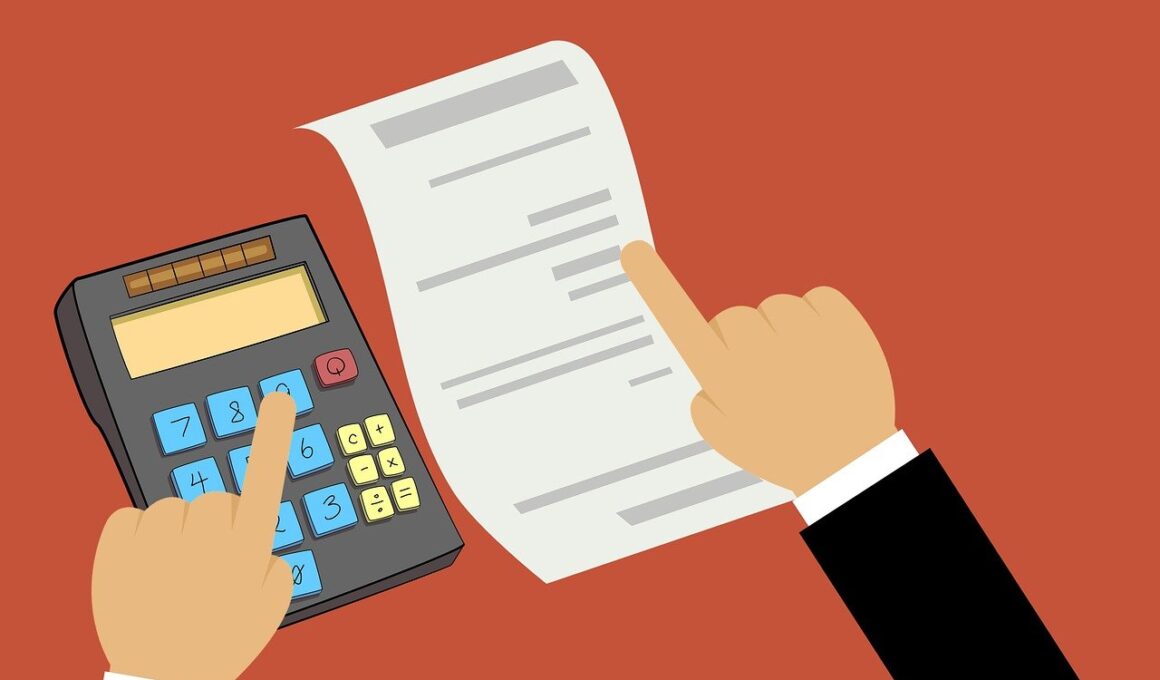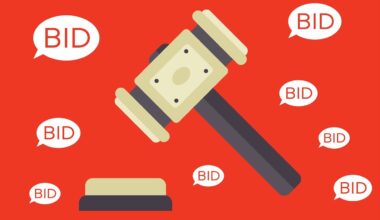Using Cost Analysis to Drive Business Decisions
Cost analysis is a systematic approach to understanding the expenses incurred by a business in its operations. It offers critical insights that can guide strategic decision-making by enabling the identification of cost behavior and cost drivers. Understanding costs involves examining direct and indirect expenses associated with various business activities, from production to marketing. Analyzing costs allows organizations to determine which areas are most resource-intensive and where adjustments can yield financial benefits. This analysis provides clarity on fixed versus variable expenses, which is beneficial for budgeting and forecasting. By closely monitoring costs, businesses can also identify inefficiencies, leading to improved operational performance. Employing tools like variance analysis helps companies compare planned to actual expenditures, providing a comprehensive view of financial health. Furthermore, this analysis can support pricing strategies, ensuring that products and services are offered competitively while covering necessary expenses. Additionally, engaging in regular cost reviews empowers a company to allocate resources effectively and react quickly to changing market conditions. In conclusion, robust cost analysis is essential for sound financial management, influencing various internal and external business decisions directly.
The Importance of Cost Behavior in Decision-Making
Businesses thrive on the ability to understand how costs behave under different conditions. Cost behavior refers to how costs change in relation to variations in volume or activity levels. Identifying fixed and variable costs plays a crucial role in decision-making. Fixed costs remain stable regardless of production levels, while variable costs fluctuate with production volumes. Comprehending these aspects assists managers in predicting future expenses and revenues accurately. For instance, companies can make informed choices about scaling operations or entering new markets by examining how costs react to increasing production demands. Recognizing the interplay between costs and these decisions is vital for achieving profitability. Additionally, understanding cost behavior aids in break-even analysis, revealing how many units must be sold to cover costs. This analysis is useful for setting sales targets and evaluating new projects or products. In situations of economic uncertainty, businesses can also assess the potential for profit amidst fluctuating demand. Ultimately, integrating cost behavior analysis into strategic planning empowers organizations to navigate challenges and seize opportunities effectively.
Another significant aspect of cost analysis is its role in budgeting and forecasting. Accurate budgeting requires a deep understanding of the anticipated costs associated with future operations. Businesses utilize historical cost data to predict upcoming expenses, enabling them to allocate funds efficiently. Understanding costs not only aids in creating budgets but also plays a vital role in resource allocation, ensuring that funds are directed to the most critical projects. Sensitivity analysis can also be employed to understand how changes in costs affect overall profitability, providing insights that drive informed financial decisions. By incorporating various cost scenarios into their budget models, organizations can manage risks effectively and streamline operations. Additionally, attention to cost trends across periods allows businesses to adjust strategies proactively. This ongoing monitoring can uncover long-term patterns that help inform strategic initiatives, guiding resource investments. Moreover, businesses may identify inefficiencies and areas requiring improvement through continuous cost analysis, promoting a culture of accountability and efficiency. Thus, a sound budgeting process supported by thorough cost analysis enhances organizational agility and ensures financial stability in an ever-evolving marketplace.
Enhancing Profitability Through Cost Management
Effective cost management is a cornerstone of enhancing profitability. Businesses must continuously analyze their cost structures to identify areas where savings can be achieved without compromising quality. By implementing cost-cutting measures in non-essential areas, companies can redirect resources to initiatives that drive growth and innovation. For example, negotiating better terms with suppliers can help reduce costs, improving margins significantly. Utilizing technology to automate processes can also lead to substantial savings in payroll expenses while enhancing efficiency. Additionally, regularly reviewing expenses allows businesses to respond to changing market conditions proactively. Companies might also look into outsourcing non-core functions to third-party service providers, helping them focus on their primary value propositions. Furthermore, utilizing metrics to measure cost drivers and operational efficiency ensures that management can monitor performance effectively. Performance dashboards offer insights into critical indicators like cost per unit and labor efficiency. This data-driven approach enables informed decision-making, resulting in the optimization of resources and better financial outcomes. Ultimately, consistent cost management practices lead to healthier profit margins and sustainable growth over time, marking a profound influence on strategic development.
Cost analysis also provides vital input for strategic pricing decisions. Understanding the complete cost structure helps organizations set prices that ensure profitability while remaining competitive. Companies. must consider both direct and indirect costs related to product or service offerings. By analyzing these costs, businesses can establish a pricing framework that covers expenses while achieving desired margins. Moreover, dynamic pricing models can be developed by incorporating cost analysis, allowing for price adjustments based on changes in market demand. This flexibility can enhance revenue potential and customer satisfaction. Conducting price sensitivity analyses and experimenting with different pricing levels can yield insights into customer behavior and product valuation. Through this comprehensive understanding, organizations can better position their offerings in the marketplace. Additionally, cost analysis helps businesses identify target profit margins across various segments, allowing them to tailor pricing strategies for different customer groups. Continual assessment of pricing strategies in relation to cost data ensures that organizations remain agile and responsive to market shifts. Therefore, using cost analysis as a foundation for pricing decisions ultimately enhances revenue generation and strengthens competitive positioning.
The Role of Cost Analysis in Risk Management
Cost analysis serves an essential purpose in risk management, enabling organizations to identify and mitigate potential financial vulnerabilities. By analyzing historical cost data alongside market trends, businesses can uncover areas susceptible to volatility and exposure. Understanding the cost dynamics involved in operations allows companies to quantify risks associated with high expenditure and explore ways to minimize them. For example, if a particular cost consistently fluctuates, businesses might seek alternative suppliers or invest in more stable materials. Furthermore, scenario analysis can help organizations anticipate the implications of different variables, ensuring they have well-informed contingency plans in place. Regularly conducting risk assessments based on cost analysis allows companies to proactively address financial uncertainties that may arise. Identifying cost-related risks also aids in budgeting and strategic planning efforts, ensuring that managers allocate resources effectively while preparing for unexpected fluctuations. Additionally, fostering a culture of transparency around costs can help employees recognize the significance of managing expenditures responsibly. Overall, incorporating cost analysis in risk assessments enables organizations to navigate uncertainty with greater confidence and security, enhancing long-term stability and resilience.
In conclusion, utilizing cost analysis to drive business decisions is imperative for sustained success. Organizations can achieve a comprehensive understanding of their financial landscape by meticulously examining costs associated with operations. This analysis fosters a culture of informed decision-making, enhancing accountability at all levels of an organization. Emphasizing the significance of cost management helps to instill best practices within companies, leading to improved financial performance and strategic alignment. Additionally, leveraging technology for cost tracking and analysis allows for real-time monitoring of financial data, facilitating quicker responses to emerging trends. By employing various analytical techniques, businesses can evaluate costs, optimize resource allocation, and enhance profitability effectively. Furthermore, engaging stakeholders in discussions about cost management fosters collaboration and collective ownership of financial outcomes. When cost analysis becomes part of the corporate culture, organizations can ensure sustainable growth and competitive advantage. As market conditions continue to evolve, having robust cost analysis frameworks in place will enhance the ability to adapt to changes and drive informed strategic decisions. Therefore, businesses that prioritize cost analysis are better positioned for success in today’s dynamic economic environment.
Next Steps in Cost Analysis Implementation
As organizations strive to integrate cost analysis into their overarching strategies, there are several steps to consider. Establishing a dedicated team focused on financial analysis can drive the initiative forward, ensuring the necessary expertise is applied. This team can implement new tools and methodologies to streamline the cost analysis process. Additionally, training staff on cost management principles and practices will cultivate a workforce capable of contributing to cost-control initiatives. Regular workshops or seminars can help build financial literacy, enabling employees to recognize the implications of their decisions on costs and profitability. Implementing software solutions that offer insights into spending patterns and forecasting might leverage technology for deeper insights into cost structures. Conducting regular reviews and audits of current cost management practices will ensure the organization is continually evolving and adapting. Moreover, creating a feedback loop where employees can share insights based on daily experiences will enrich the analysis process. Ultimately, collaborating across departments and fostering a shared commitment to managing costs will help institutionalize cost analysis as a key component of the company’s competitive strategy. Investing in these steps will yield substantial long-term benefits for organizations aiming to enhance financial performance.


